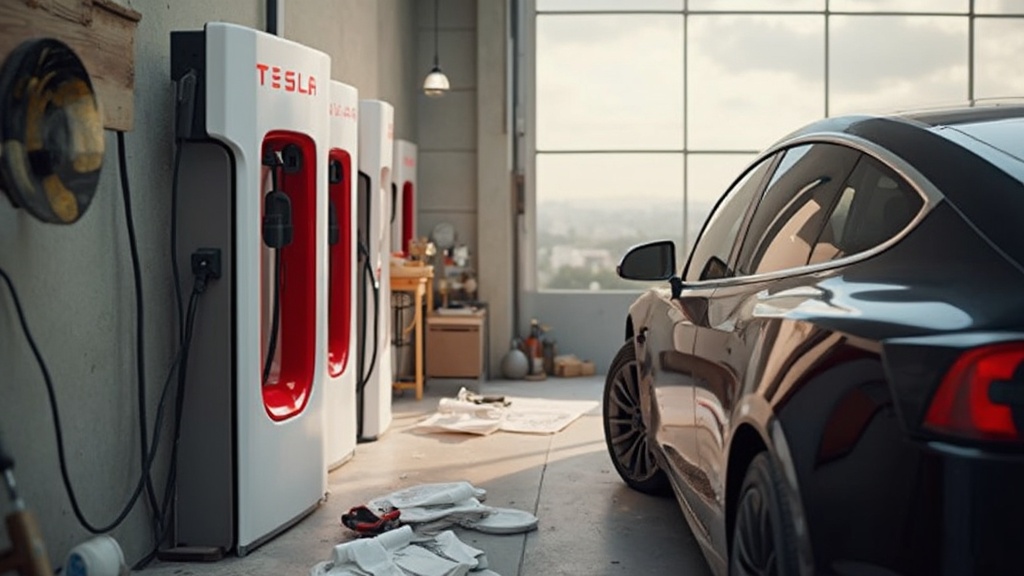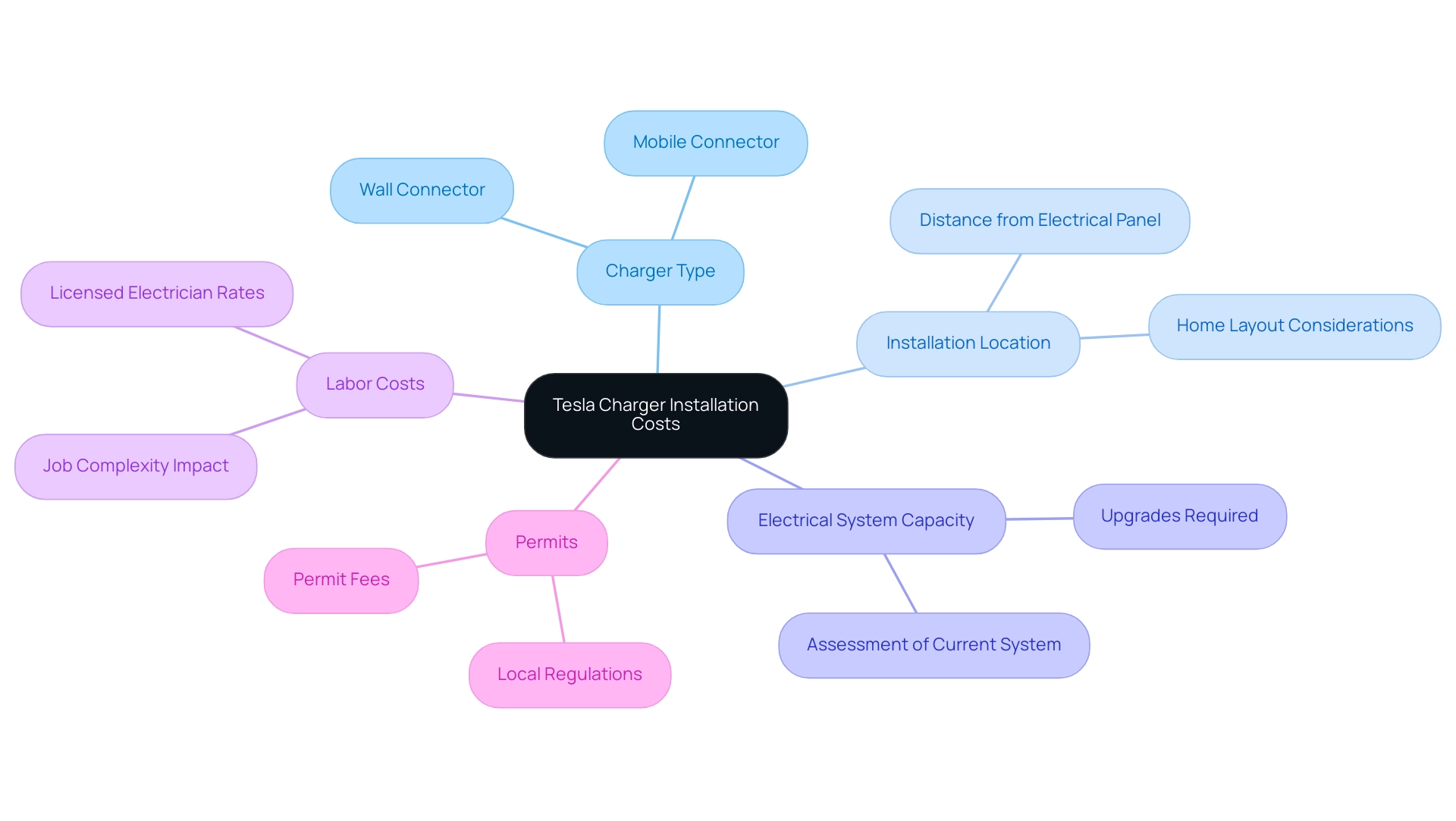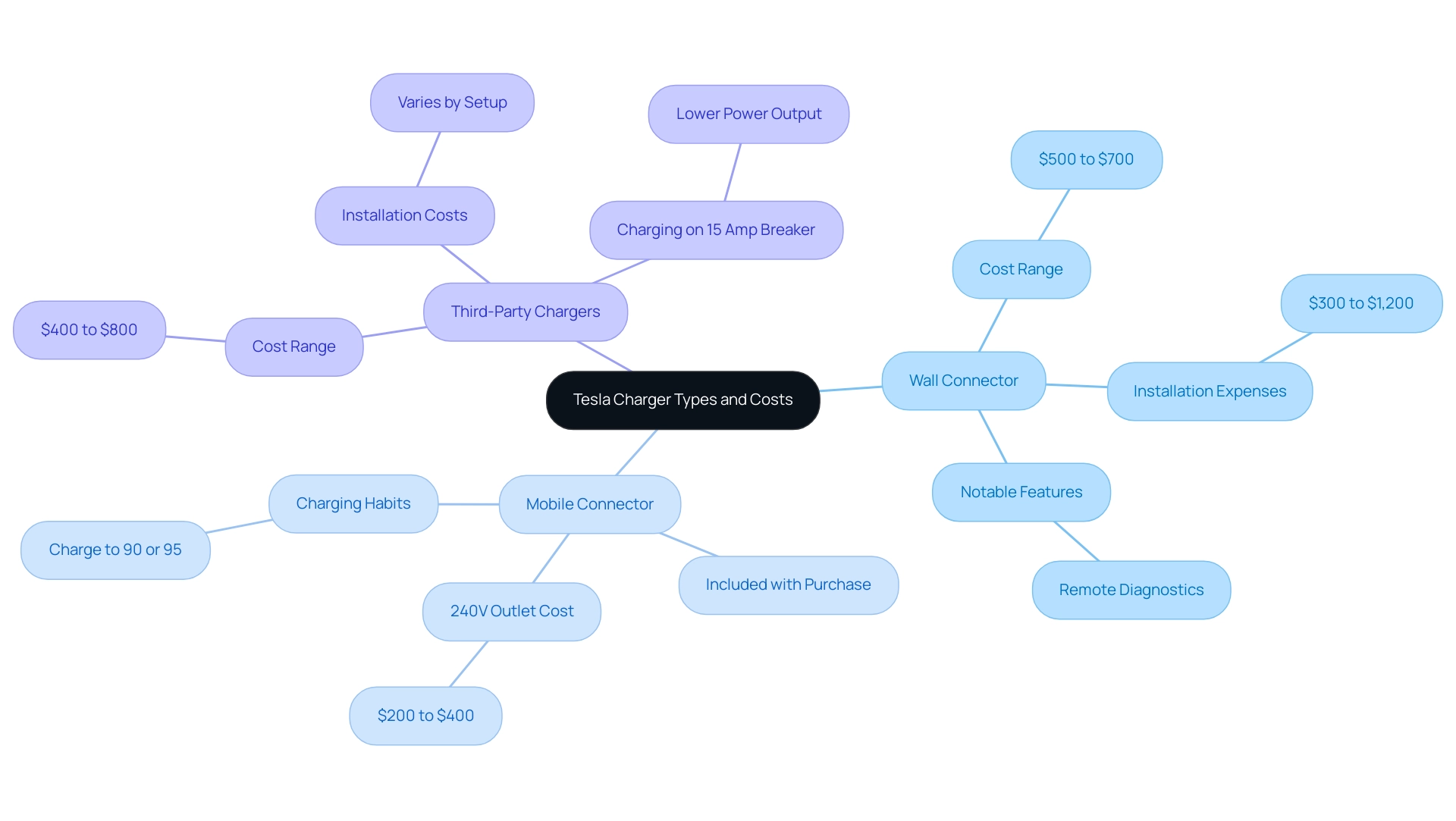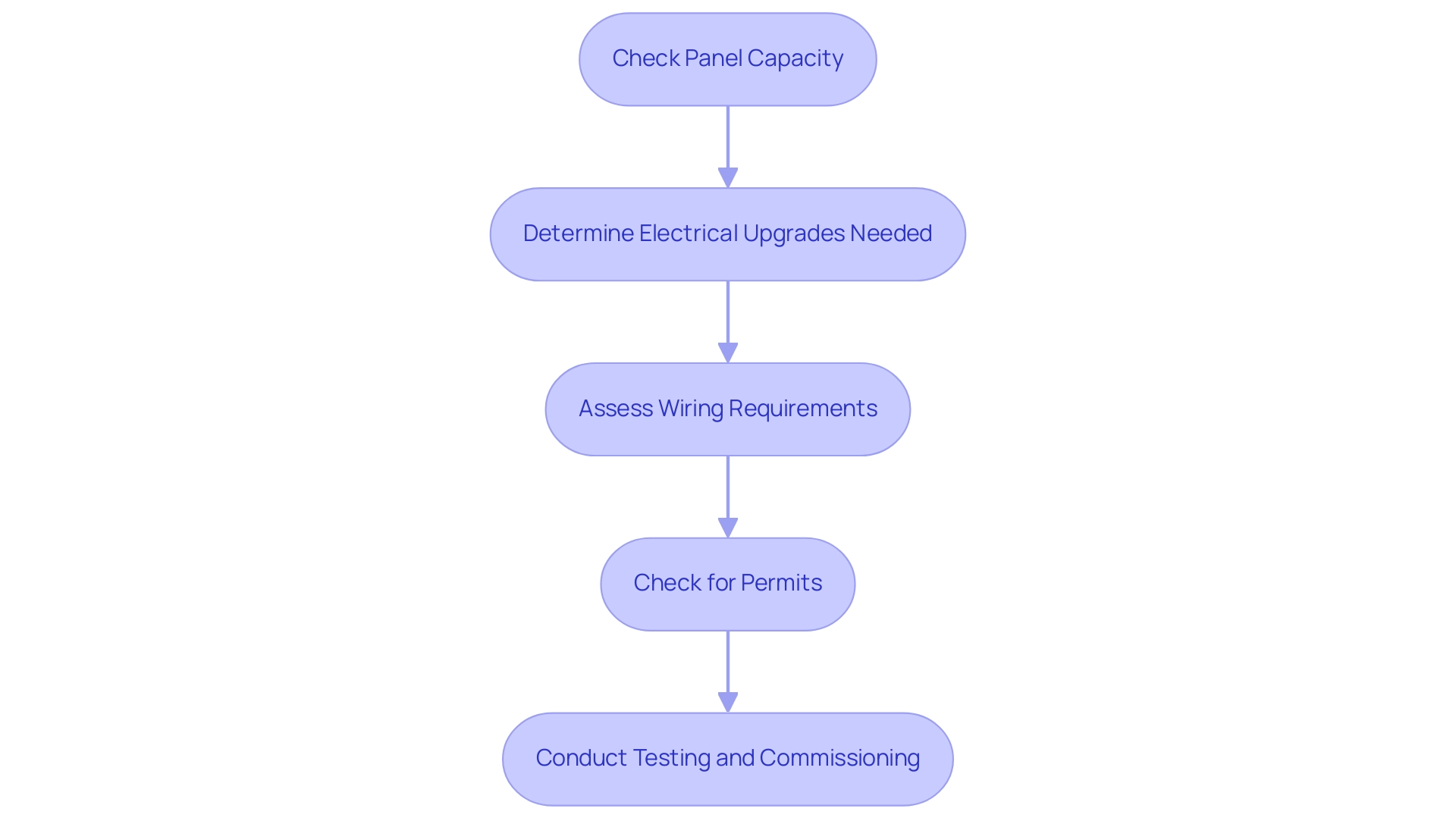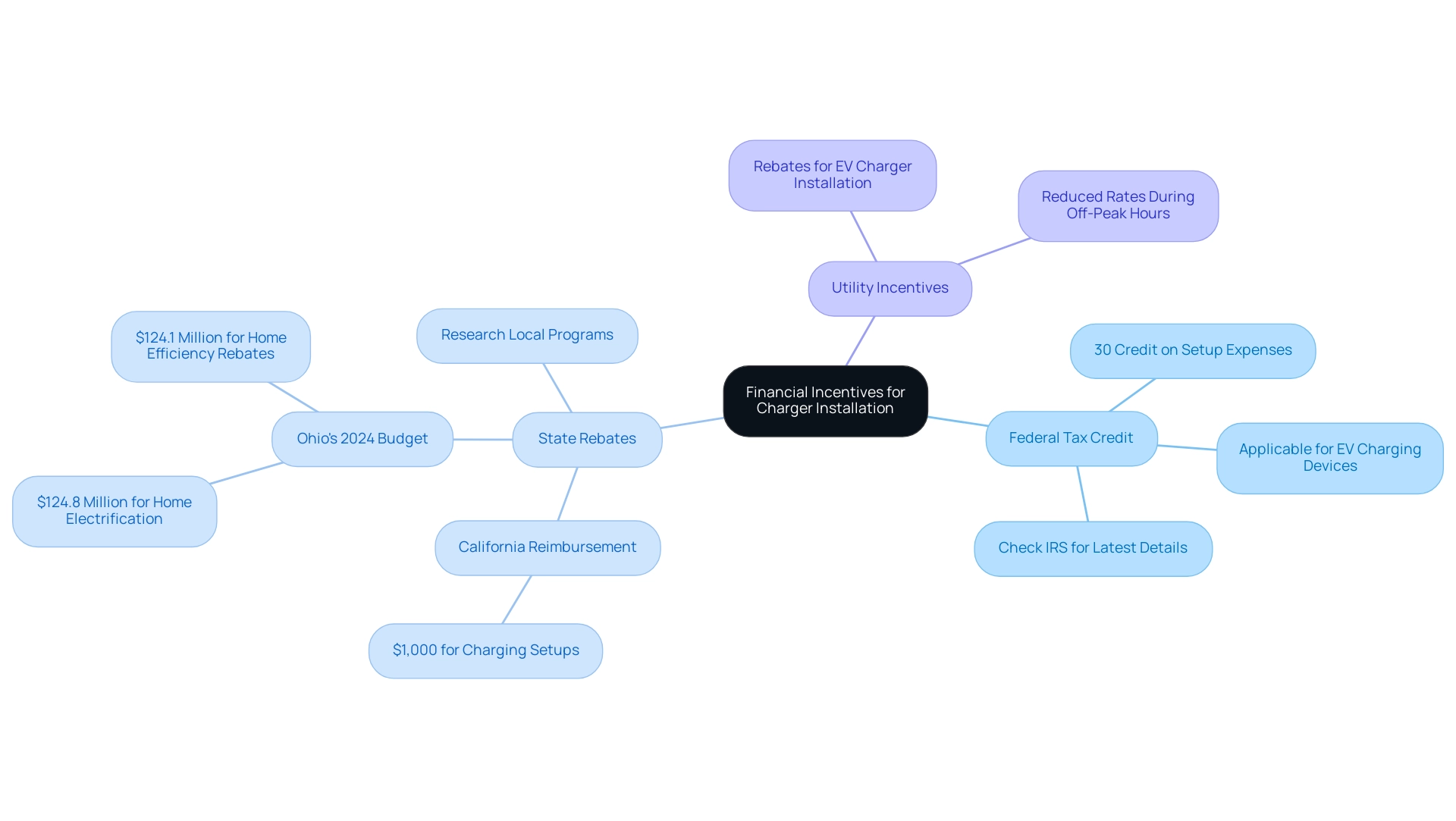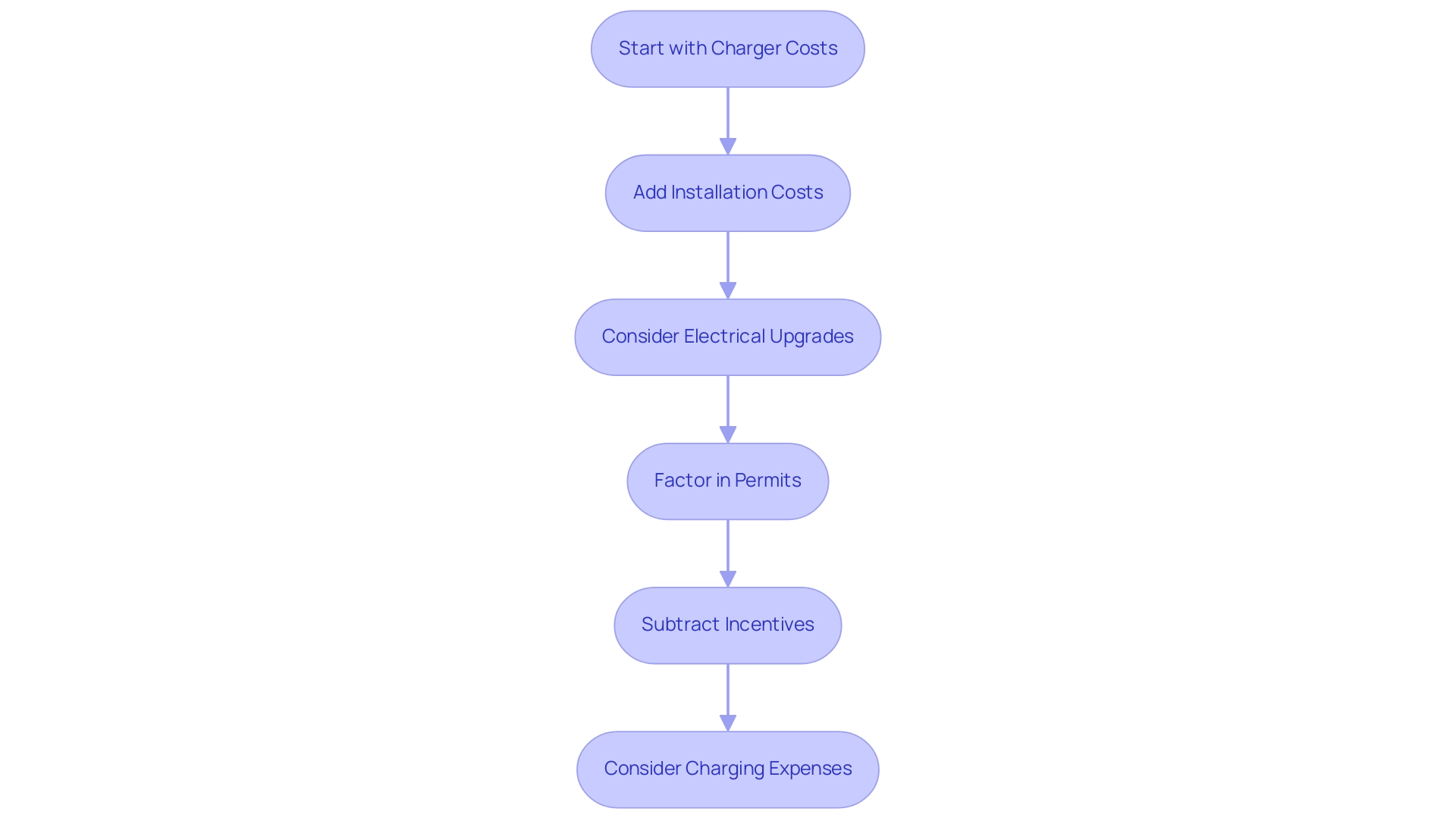Introduction
Installing a Tesla charger at home is an exciting step towards embracing sustainable living, but it can also raise a host of questions—especially regarding costs. For homeowners, particularly those in areas like Long Beach, understanding the various factors that influence installation expenses is crucial.
From choosing the right charger type to navigating electrical upgrades and potential permits, every detail can impact the overall budget. Fortunately, there are also financial incentives and rebates available that can help ease the financial burden.
This guide aims to demystify the process, providing practical insights and tips to ensure a smooth and cost-effective installation experience. Whether it’s about selecting the best charger for your needs or exploring the benefits of pairing your setup with solar energy, the journey to home EV charging can be both manageable and rewarding.
Understanding the Factors Influencing Tesla Charger Installation Costs
When contemplating the expense of installing a Tesla charger, especially as a Long Beach renter interested in eco-friendly solutions, it’s essential to keep a few key factors in mind:
- Charger Type: The choice between different models, such as the Wall Connector or a mobile connector, can significantly affect your overall expenses.
- Installation Location: The farther your installation site is from the electrical panel, the more labor and materials will be required. This distance can add to your costs, so it’s wise to consider the layout of your home.
- Electrical System Capacity: If your home’s electrical system isn’t equipped to support the charging unit, necessary upgrades will increase your budget. Ensure you assess this before moving forward.
- Labor Costs: Rates vary widely depending on your location and the job’s complexity. Engaging a licensed electrician is not just a recommendation—it’s vital for ensuring safety and compliance with local codes.
- Permits: Don’t forget about possible permit fees! Local regulations might require you to obtain permits, which can add to the total installation cost.
Additionally, plugging in your electric vehicle every evening to top off the battery ensures you start each day with a full charge. Understanding these factors can help you manage the financial aspects of how much does Tesla charger installation cost to get your Tesla device operational. With 80% of EV refueling happening at home, investing in a reliable setup is crucial. Additionally, think about the advantages of combining your power source with solar panels—this can further lower expenses and improve your energy autonomy. Numerous regional and state initiatives provide benefits for setting up EV stations and solar panels, which can greatly reduce installation expenses. As one satisfied customer, Amy R., stated,
Highly recommend!! Exceptional service and price. Tom was very helpful, a really nice straightforward guy who definitely cares about his clients.
It’s clear that choosing the right installer, especially one familiar with solar solutions, makes all the difference!
Comparing Tesla Charger Types and Their Installation Expenses
When considering the best charger for your home, it’s important to understand the options available and their associated costs:
- Wall Connector: This is the go-to choice for efficiency and speed, making it ideal for daily use. The unit typically ranges from $500 to $700, and installation can set you back anywhere from $300 to $1,200, depending on how complex the setup is, which can lead to inquiries about how much does tesla charger installation cost. Additionally, remote diagnostics can be performed on the Wall Connector using the manufacturer’s diagnostic tools, providing peace of mind and convenience.
- Mobile Connector: Included with your Tesla purchase, this device is perfect for on-the-go charging. While it doesn’t require professional installation, you might need to invest in a 240V outlet, which could range from $200 to $400. It’s worth noting that on longer trips, users often charge to 90 or 95%, which can affect your charging habits and needs.
- Third-Party Chargers: These alternatives provide flexibility, with prices ranging from $400 to $800 for the unit itself. The costs associated with installation will vary, including how much does tesla charger installation cost, based on the specific requirements and setup of the charger. For instance, it is possible to charge an electric vehicle using a 15 amp breaker with the mobile connector, allowing for charging at a lower power output, which can be particularly useful for various home setups.
In addition to these charging options, integrating solar energy solutions can significantly enhance your home’s efficiency and sustainability. Government programs are available to assist homeowners in adopting solar technology, providing financial incentives and support. Solar panels can offer a reliable energy source, while services for cleaning and maintaining them ensure they operate at peak efficiency year-round.
Furthermore, considering battery options for efficient energy storage can help you maximize the benefits of your solar investment. As Steve, the founder of ‘EV Chargers Guide’, aptly puts it,
Here, I am providing all-around resources addressing the EV charging needs and challenges – be it from selecting the best home EV charging station to overcoming any charging problems that come along the way.
This viewpoint highlights the significance of making a knowledgeable choice when selecting your home charging solution, combining both electric vehicle charging and solar energy for a genuinely eco-friendly home.
Navigating Electrical Upgrades and Permits for Your Tesla Charger
Before starting the installation of your Tesla device, it’s crucial to ensure your electrical system is ready for the task. Here are some friendly tips to guide you:
-
Panel Capacity: First and foremost, check if your electrical panel can manage the additional load from the device.
If your panel is lacking, an upgrade might be necessary, and you should check how much does tesla charger installation cost, which typically ranges between $1,000 and $3,000. This investment not only supports your new EV station but also helps you understand how much does tesla charger installation cost to prepare your home for future energy requirements. Our team at Powercore Electric can conduct a thorough site assessment to determine your specific requirements.
-
Electrical Upgrades: Depending on the existing electrical infrastructure, you may need upgrades or modifications to accommodate the charging station. This could include upgrading the panel, installing new wiring, or enhancing the circuit to ensure safety and efficiency. Our skilled electricians can assist you in addressing these requirements to ensure a smooth setup process.
-
Wiring: Consider the distance between your panel and the charger. This distance may necessitate new wiring or conduit, which can influence how much does tesla charger installation cost. It’s advisable to discuss these details with our team to understand the specifics of your situation.
-
Permits: Don’t forget to check with your local jurisdiction to see if a permit is required for your setup. Permit fees can vary widely, usually ranging from $50 to $300, depending on where you live. Being proactive about this can save you headaches down the road.
-
Testing and Commissioning: After setup, it’s essential to conduct thorough testing and commissioning to ensure the device operates optimally. Our team will rigorously test the installation, checking for any issues and ensuring compliance with safety standards before handing it over to you.
For a seamless installation experience, consulting with a licensed electrician from Powercore Electric is a great idea. We can help you navigate these requirements, ensuring everything is in order for your new charger to power up your electric vehicle efficiently.
Just like one homeowner who successfully installed a Wall Connector at their ski cabin, which has been running flawlessly for five years, you’ll want to ensure your setup is reliable, especially against the elements. They succeeded in reducing expenses, spending approximately $140 on electrical supplies and another $300 on roofing materials to shield their connector from severe weather, all while taking advantage of the Referral Program for free shipping. So, get ready to plug in and enjoy the convenience of home charging!
For more details on our services, including solar panels and battery backups, feel free to contact us at Powercore Electric.
Exploring Financial Incentives: Rebates and Tax Credits for Charger Installation
When it involves setting up a Tesla power source at home, homeowners can access a range of financial incentives to alleviate the expenses:
- Federal Tax Credit: As of 2023, a significant opportunity exists with the federal tax credit, allowing you to claim up to 30% of the setup expenses for your electric vehicle charging device. For the latest details, it’s a good idea to check the IRS website.
- State Rebates: While Ohio may not offer solar tax credits or utility rebates for electric vehicle charging stations, it’s worth noting that many states do provide incentives. For instance, California provides programs that can reimburse homeowners up to $1,000 for charging setups. Furthermore, the federal government has various programs to promote solar energy adoption that can also aid Tesla charging setups. With Ohio’s 2024 budget allocating $124.8 million for home electrification and efficiency rebates, it’s key to stay informed on potential local programs as well. Given that state incentives can vary widely, researching local programs is essential to maximize savings.
- Utility Incentives: Don’t forget to check with your utility company! Many offer incentives for customers who install EV chargers, which can include rebates or reduced electricity rates during off-peak hours.
In addition to these incentives, consider integrating solar panels into your home energy solution. Programs such as the Solar Investment Tax Credit (ITC) can assist in subsidizing their expenses, making it more affordable. Furthermore, remaining informed about the top solar battery choices can improve your energy storage abilities, rendering your home even more energy efficient.
Investing time in research and applying for these incentives can greatly reduce your expenses, making the shift to electric vehicle ownership economical, particularly when you consider how much does tesla charger installation cost. As Kelley R. Taylor, a Senior Tax Editor at Kiplinger.com, highlights, understanding these financial opportunities is essential for homeowners looking to embrace sustainable technology in their everyday lives. For further insights, check out our recent posts on how solar panels work, the benefits of solar battery storage, and available government programs designed to assist homeowners in making sustainable choices.
Estimating Your Total Tesla Charger Installation Cost: A Practical Guide
Calculating the overall expense of your electric vehicle charging station setup can seem somewhat intimidating, but dividing it into manageable steps simplifies the process significantly:
- Start with Charger Costs: First, decide which Tesla charger suits your needs best. The prices can vary, so it’s wise to do a bit of research or check a comparison guide to find the right fit for you.
- Add Installation Costs: Next, include labor and material costs. Generally, you’re looking at how much does tesla charger installation cost, with a range from $300 to $1,200 for setup, depending on your specific circumstances. At Powercore Electric, our expert team ensures a seamless installation process that adheres to all safety and regulatory standards, utilizing advanced technologies for optimal performance.
- Consider Electrical Upgrades: If your current electrical panel needs an upgrade to support the new charger, don’t forget to account for that. Upgrading can range from $1,000 to $3,000, so it’s an important factor to consider. Our professionals will assess your property to determine any necessary electrical modifications.
- Factor in Permits: Depending on where you live, you might need to get permits for the installation. Be sure to check local regulations and include any permit fees in your budget.
- Subtract Incentives: Finally, research any available rebates or tax credits that can help lower your overall expenses, as these can make a significant difference. Programs may differ by state, so be sure to investigate options that could save you money.
It’s also essential to consider the expenses related to charging your vehicle. For example, using a Supercharger can amount to $0.43 per kWh, which is essential when planning your total EV expenses.
By following these steps, you’ll be on your way to creating a detailed budget that reflects how much does tesla charger installation cost for your setup. This preparation ensures you’re financially ready for this important investment in sustainable transportation. Remember, expert consultations can be incredibly helpful in navigating these costs and making informed decisions—just like I did when I worked with Stepwise, a company that specializes in smart electric solutions.
As Bob from Stepwise noted, ‘They brought me back a week ago,’ emphasizing the value of professional guidance.
Additionally, consider real-world scenarios like the setup challenges faced by a resident in a condo, who had to navigate a significant distance from the electric meter to their unit, requiring a 180-foot run in EMT conduit. By tapping into the feeder line from the meter, the installation was successfully completed without exceeding the condo’s panel capacity, showcasing the importance of expert advice in overcoming installation hurdles. At Powercore Electric, we are committed to providing comprehensive insights into solar energy solutions, including Tesla home chargers, ensuring your transition to sustainable energy is smooth and efficient.
Conclusion
Understanding the costs associated with installing a Tesla charger at home is essential for homeowners looking to embrace electric vehicle ownership. Factors such as the type of charger, installation location, electrical system capacity, labor costs, and necessary permits all play a significant role in the overall expense. By being informed about these elements, homeowners can make strategic decisions that align with their budget and energy needs.
Moreover, the variety of charger options available—from the efficient Tesla Wall Connector to the versatile Mobile Connector—offers flexibility in both functionality and cost. Integrating solar energy solutions can further enhance sustainability while potentially reducing long-term expenses. Additionally, financial incentives such as federal tax credits, state rebates, and utility incentives can provide valuable savings, making the transition to an electric vehicle more accessible and affordable.
In summary, investing in a Tesla charger is not just about the initial costs; it’s about future-proofing your home and contributing to a more sustainable lifestyle. By taking the time to research and plan for installation, homeowners can enjoy the convenience of home charging while benefiting from available financial support. With the right approach, the journey to electric vehicle ownership can be both rewarding and manageable. Embracing this eco-friendly technology not only supports personal goals but also contributes positively to the environment.


